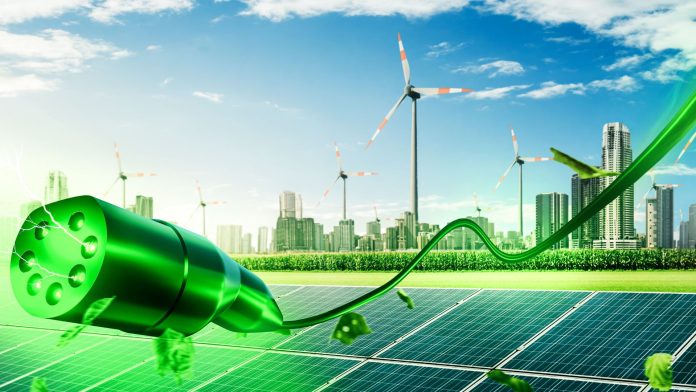This year will be exceptionally important for the green transition in Croatia. All indicators suggest that renewable energy will account for more than 70% of the annual electricity production, which would place Croatia among the top 5 countries in the European Union. Although subject to a high degree of uncertainty, preliminary figures predict that the contribution of wind, solar, biogas, biomass, and geothermal energy to meeting consumption could reach 20% of available energy this year. According to data from HEP-ODS, Croatia had 353 MW of installed solar power capacity on August 1st, and due to the commissioning of new production capacities in August, we have seen significant growth in solar power production.
This year will be exceptionally important for the green transition in Croatia. All indicators suggest that renewable energy will account for more than 70% of the annual electricity production, which would place Croatia among the top 5 countries in the European Union. Although subject to a high degree of uncertainty, preliminary figures predict that the contribution of wind, solar, biogas, biomass, and geothermal energy to meeting consumption could reach 20% of available energy this year. According to data from HEP-ODS, Croatia had 353 MW of installed solar power capacity on August 1st, and due to the commissioning of new production capacities in August, we have seen significant growth in solar power production.
In August, solar power plants accounted for 2.2% of the production mix
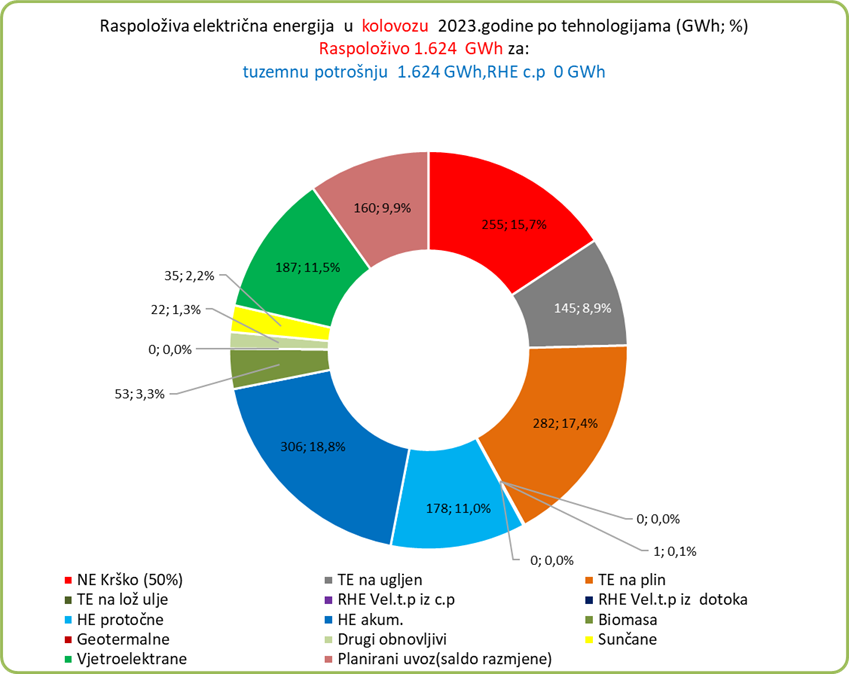
Wind power plants also had good production in August, while production from geothermal capacity was significantly reduced. At an hourly level, there was significant variability in electricity traffic in August due to weather conditions during the month and the impact of the tourist season. Due to favorable hydrology, hydroelectric power plants had a high production in August, but our thermal power plants also operated intensively. The Plomin thermal power plant recorded a production of 145 GWh in August, while gas-fired thermal power plants produced 282 GWh. In August, due to high consumption, a significant amount of electricity had to be imported, specifically 160 GWh. The maximum import reached 1,371 MWh/h, with the highest imports occurring during the heatwave from August 21st to 27th. RHE Velebit was out of operation for almost the entire month.
By the end of the year, we could have around 459 MW of installed solar power capacity
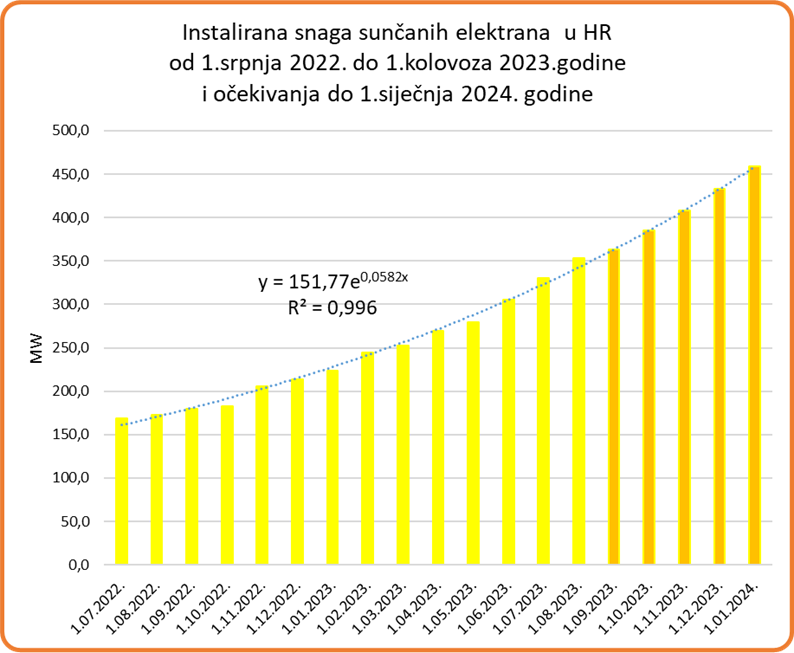
The strong growth in solar power production capacity over the past year, as shown in the graph, follows an exponential curve. If this growth continues by the end of the year, we could reach nearly 500 MW of solar capacity, which will significantly contribute to a balanced energy system and ultimately reduce imports.
Total wind power production in August 2023
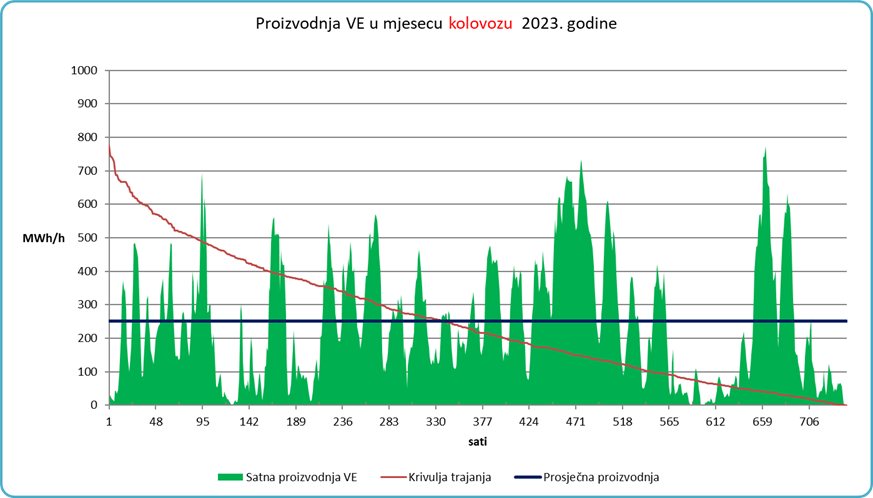
Total wind power production in August 2023 amounted to 186,958 MWh, with a capacity factor of 23.0%, which is higher than the multi-year average for this month. The average production of wind power plants in August was 251.3 MWh/h, with a maximum hourly production of 774 MWh/h and a maximum capacity factor of 70.9%.
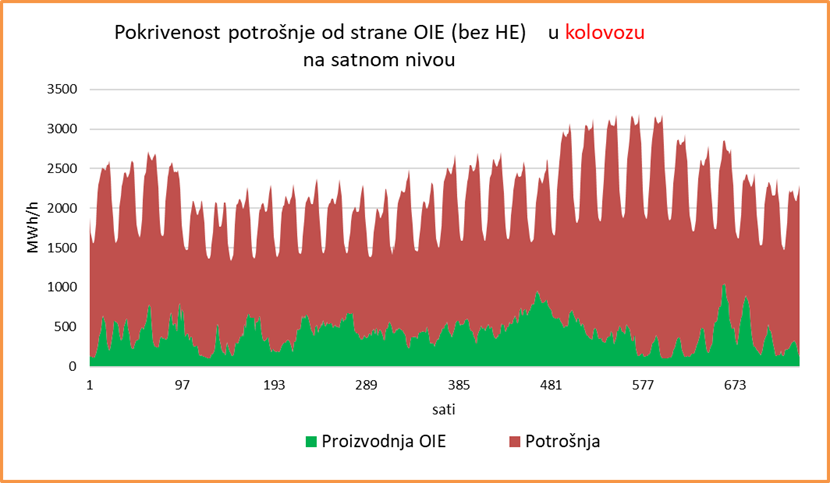
Electricity produced from renewable sources covered up to 50% of the August consumption at an hourly level, with periods where it covered only 3.2% of consumption.
In August, we imported electricity
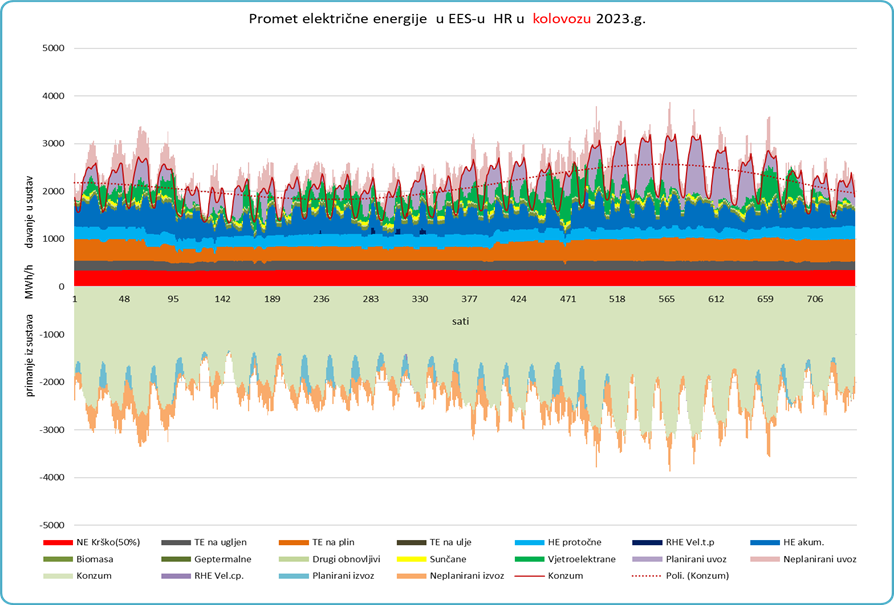
In August, we imported electricity due to favorable water content in the reservoirs, and there was sufficient flexibility in the system for system services and balancing on the production side, with some achieved through interconnections (exports/imports) to balance the system. The maximum hourly exchange was 3,872 MWh/h, and the maximum hourly transit was 850 MWh/h. The transmission grid performed well, especially during the heatwave when transmission capacities are reduced due to conductor heating. However, due to increased consumption, we had to purchase 160 GWh of electricity.
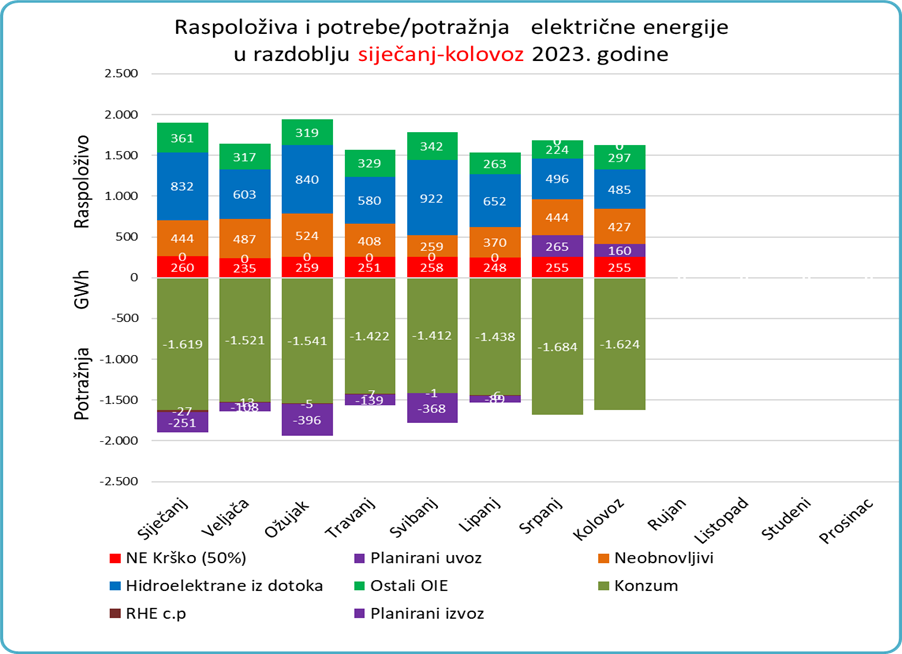
In the first eight months of this year, we were exporters of electricity, whereas last year we had to import it. In the first eight months of this year, we sold 926 GWh of electricity, while in the same period last year, we bought 1,580 GWh. This difference of 2,506 GWh, along with market electricity prices, undoubtedly contributed to excellent economic results for energy companies.
Key indicators for the first eight months of 2023:
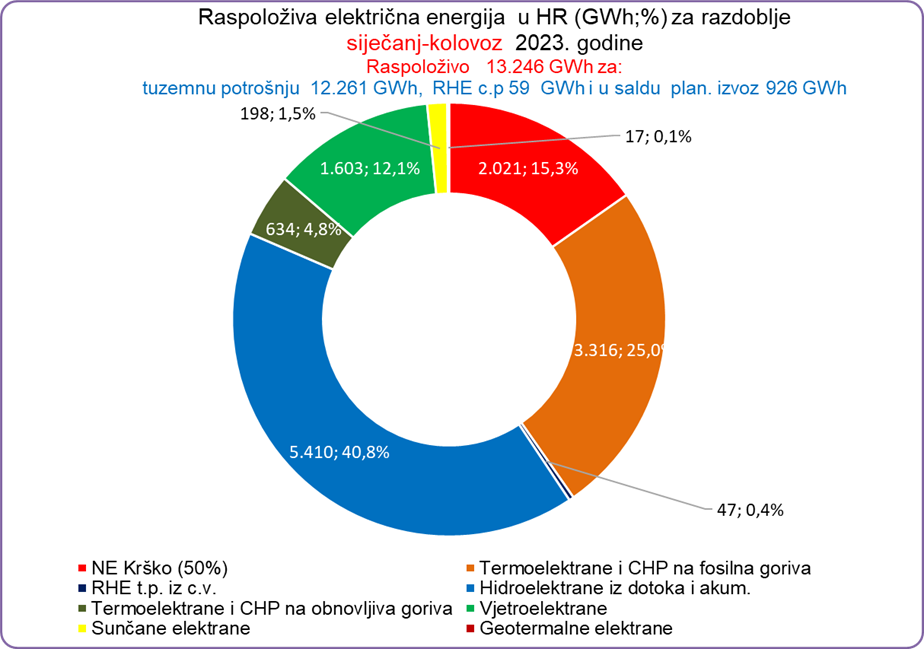
Total electricity turnover in Croatia’s power system in the first eight months of this year amounted to 17,352 GWh, of which available energy, or demand, was 13,246 GWh, and the surplus of 926 GWh was sold on foreign markets.
From January to August 2023, total electricity production at power plants in Croatia amounted to 11,225 GWh, with production from non-renewable sources accounting for 3,363 GWh (30.0%) and renewable sources contributing 7,862 GWh (70.0%).
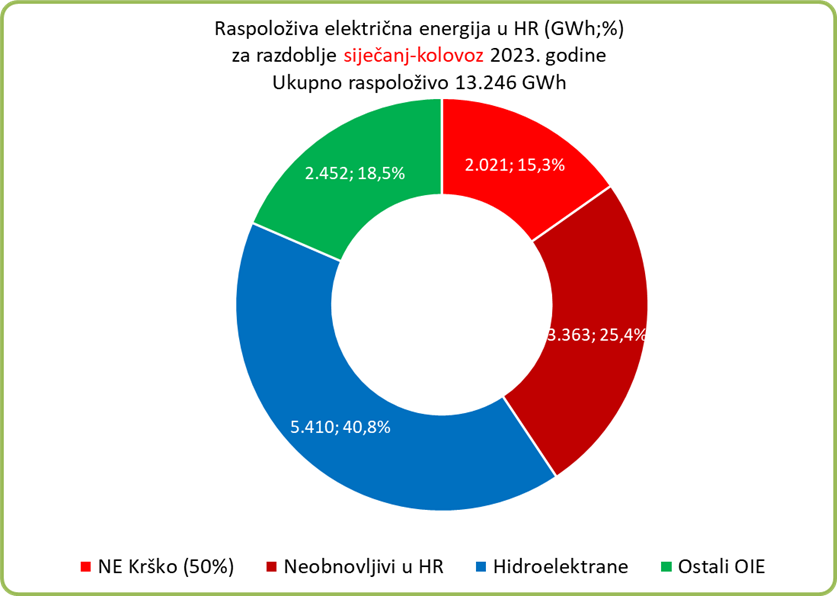
Total electricity consumption in the first eight months amounted to 12,320 GWh, with domestic consumption totaling 12,261 GWh, and consumption by the hydroelectric power plant for water pumping amounting to 59 GWh. The Krško Nuclear Power Plant (50%) produced 2,021 GWh, operating at 99.6% of nominal capacity. Since available energy exceeded total consumption, the surplus was exported to foreign markets.
RES production in the first eight months of 2023
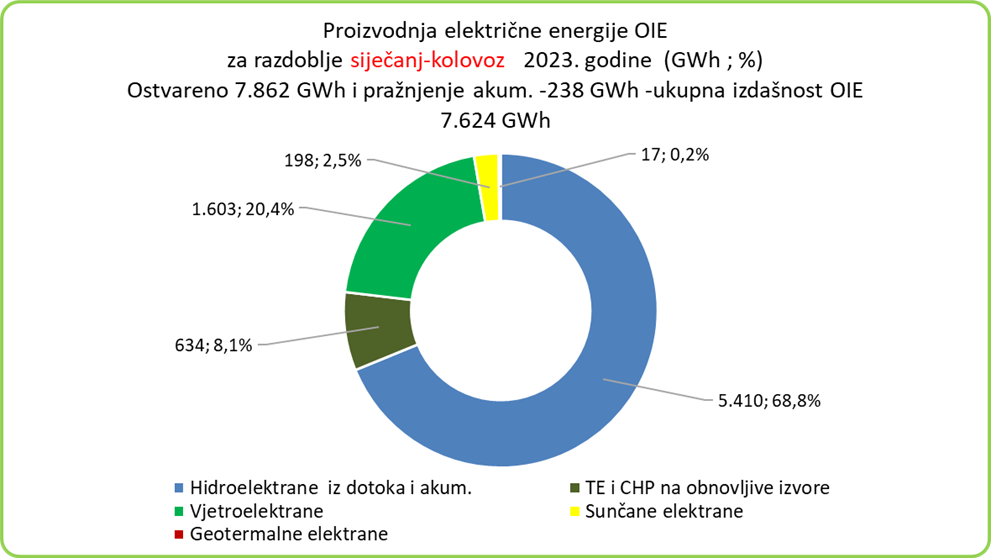
In the first eight months of 2023, renewable sources contributed 59.3% of available energy (hydroelectric power plants 40.8%, other renewables 18.5%), non-renewables accounted for 25.4%, and the Krško Nuclear Power Plant contributed 15.3%. Other renewables could reach a share of 20% of available energy this year.

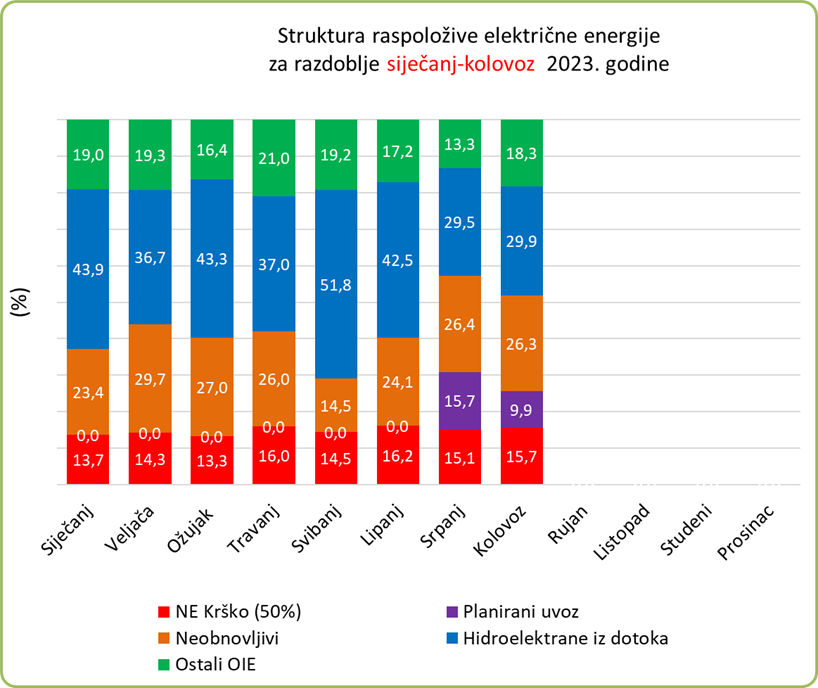
The Krško Nuclear Power Plant (50%) produced 47 GWh more electricity in the first eight months of this year compared to the first eight months of last year. During the same period, electricity production from renewable sources was higher by 2,228 GWh, with a notable increase in hydroelectric power generation from water inflows and reservoirs. Wind turbines generated 37 GWh more electricity during the same period, and solar power plants produced 139 GWh more. The production of other renewable energy sources (OIE) was lower by 34 GWh.
In the first eight months, renewable sources contributed to 59.3% of available energy (hydroelectric power plants 40.8%, other renewables 18.5%), non-renewables accounted for 25.4%, and the Krško Nuclear Power Plant contributed 15.3%. Other OIE could reach a share of 20% in available energy this year.
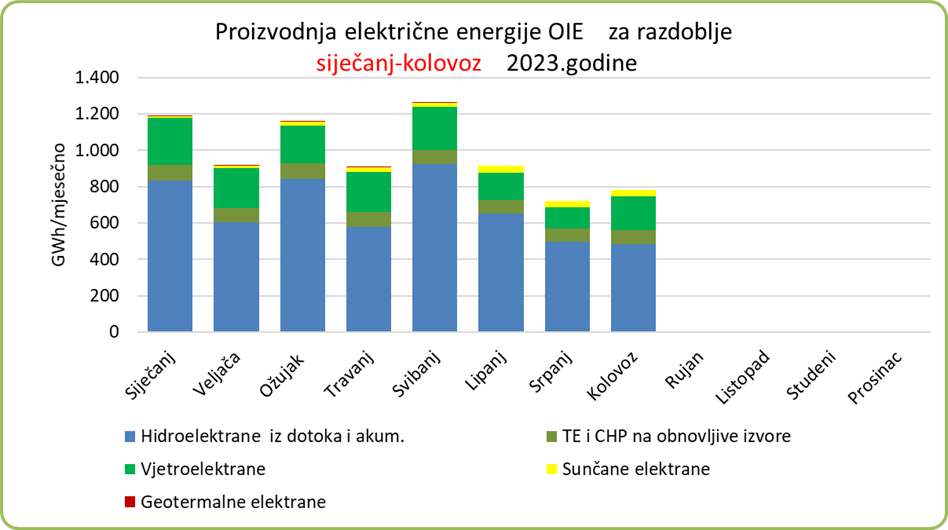
The energy value of water inflows for hydroelectric power plants in the first eight months of this year was 5,172 GWh, which is 2,353 GWh higher than in the same period last year. Due to excellent reservoir content for this time of year and current water inflows, favorable energy and economic trends can be expected in September as well. This also ensures the security of supply for consumers and the operation of the power system.
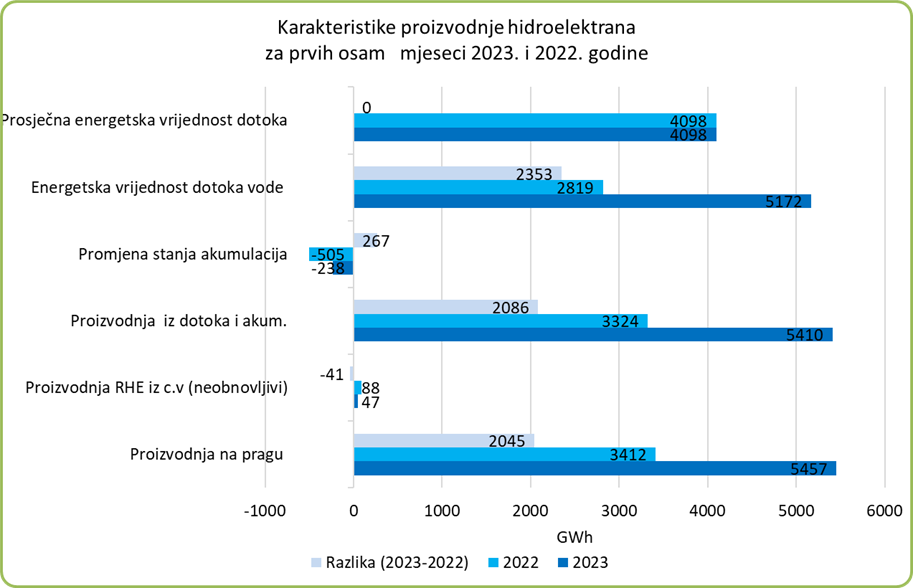
Thanks to the abundant potential of renewable energy sources, Croatia could achieve energy self-sufficiency and position itself on the EU energy map much better than other countries in the near future. With the help of renewable energy sources, this year’s energy balance could end with a surplus.
This report was prepared using publicly available data from: HEP, HOPS, ODS, HROTE, CROPEX, NE Krško, ENTSO, DZS, RTE France, RED Electrica, World Data, IEA, EEX, EPEX, IRENA.


